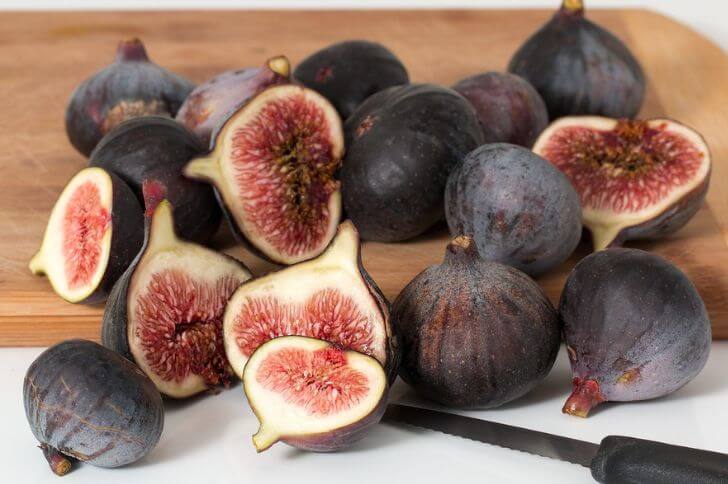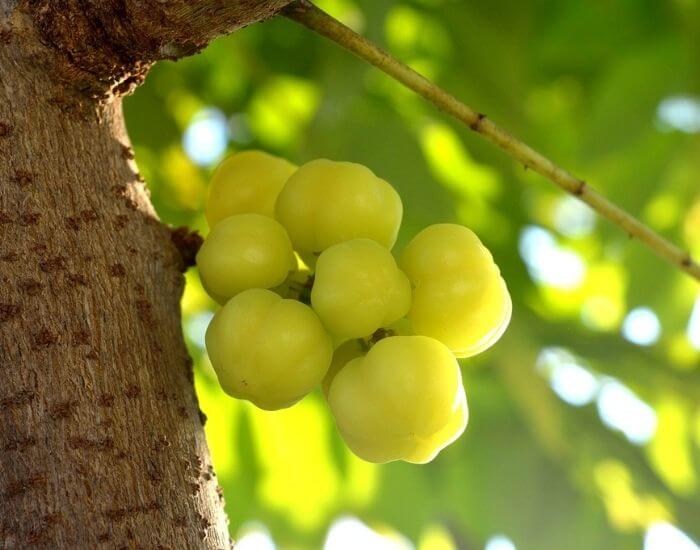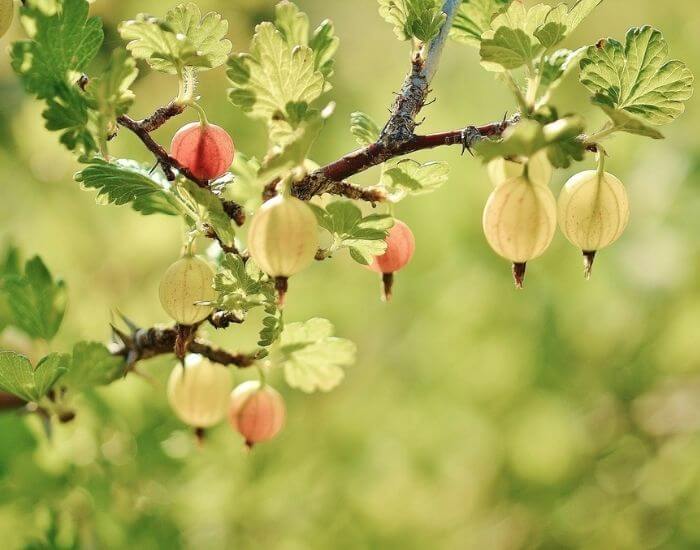Higo fruit, commonly called the fig fruit, is a nutritious and delicious fruit that is enjoyed all over the world. The fig tree is a member of the mulberry family and has been cultivated since ancient times for its sweet, juicy fruits.
Higo fruit comes in a variety of colors including green, purple, brown and black. From savory dishes to sweet desserts, this versatile fruit can be used in a variety of recipes – making it an essential ingredient in many cuisines around the globe.
Below, we’ll look at common varieties of figs and how to use them.
Are figs fruits
Higos are often mistaken for being a type of fruit, but they are actually classified as an inverted flower. The fig’s unique structure is what sets it apart from other fruits.
Higos grow on a tree in groups called “syncarps,” which consist of multiple flowers that have fused together to form one large fruit. As the fruit ripens, the syncarp becomes soft and sweet, making it a delicious addition to any dish.
How is higo fruit formed?
Higos are formed through a complex process that involves both the plant and the pollinating agent. The tree produces a unique type of flower which is enclosed within a fleshy structure called an inflorescence. This inflorescence develops into what we commonly refer to as the fig fruit.
Inside each inflorescence, there are numerous tiny flowers that require pollination in order to form seeds within the developing fruit.
Interestingly, this pollination process is carried out by very specific types of wasps which enter the inflorescence through a small opening at its base.
These wasps carry pollen from their previous host higos and lay their eggs inside the developing fruits in return for being able to reproduce.
As these eggs hatch into larvae, they begin feeding on some of the interior contents of the developing fruits before eventually exiting as fully grown wasps.
Meanwhile, new seeds have been formed within the matured fruits leading to their eventual ripening and drop from the tree when they become ready for consumption or further propagation by animals that eat them and disperse their seeds elsewhere.
Higo Varieties

- Black Mission Fig
Known for their unique dark purple color and sweet flavor, black mission Figs are a popular choice among fruit enthusiasts.
To properly identify these figs, there are several key characteristics to look out for. Firstly, the skin of a ripe fruit should be deep purple or almost black in color with a slightly wrinkled texture.
The figs should feel soft when gently squeezed but not mushy or overly firm.
Additionally, the size and shape of mission figs can vary slightly, but they generally have an oval or pear-like form.
These figs typically measure around 1-2 inches in length.
- Brown Turkey Figs
Are you looking to add a touch of sweetness and elegance to your garden or fruit bowl? Look no further than brown turkey figs.
These luscious fruits are not only delicious but also incredibly versatile in both sweet and savory dishes.
One of the reasons why brown turkey figs are so popular is their delectable taste. When fully ripe, these figs have a rich, honey-like sweetness with hints of caramel and berry notes.
The soft flesh has a pleasing texture that melts in your mouth, making it perfect for eating fresh or incorporating into desserts such as tarts, cakes, or jams. Additionally, the subtle earthy undertones make them an excellent choice for pairing with savory ingredients like cheese or prosciutto.
- Celeste fig
The Celeste fig, also called sugar fig, is a beloved fruit that offers a burst of sweet flavor and a versatile range of culinary possibilities. Its vibrant violet skin gives way to tender, juicy flesh that is highly sought after by fig enthusiasts worldwide.
Whether eaten fresh off the tree or incorporated into various recipes, this higo fruit never fails to delight with its unique taste and texture.
One of the standout features of the Celeste fig is its exceptional sweetness. Unlike some other varieties that can be overpoweringly sugary, this cultivar strikes a harmonious balance between natural sugars and subtle hints of honey-like flavors.
- Kadota fig
With its sweet and juicy flesh, this higo variety is a favorite among many. Originating from the Mediterranean region, this fig tree thrives in warm climates and is cherished for its ability to adapt to different soil types.
The Kadota fig’s natural sweetness makes it an excellent ingredient for jams, preserves, and desserts like cakes or tarts. It can also be incorporated into savory recipes by being paired with cheese or used as a topping for salads.
- Olympian fig
Commonly harvested in July, the olympian fig is a sweet fruit that can be found in most of the US. The purple skinned fruit are larger compared to other varieties. Trees mature in 2-3 years after planting.
- Desert King fig
This higo fruit is renowned for its sweet, honey-like flavor and reddish, juicy flesh. Its distinctive taste profile sets it apart from other fig varieties, making it a popular choice.
Desert king figs retain a greenish color even in maturity and are smaller compared to the olympian variety above.
Related Read: Learn about exotic Chiku fruits
Where do figs come from?
Higo fruits originate from the ficus carica tree. This tree is believed to have originated in Western Asia and the Middle East but is now grown in many parts of the world.
Cultivation dates back to ancient times with evidence of its consumption found in excavation sites throughout history.
Today, higo fruit can be found growing in Mediterranean countries such as Spain, Italy, Greece, and Turkey.
One of the most prominent fig-growing regions in the US is California. The state’s Mediterranean climate provides ideal conditions for fig cultivation, with long summers and mild winters.
In fact, California produces over 90% of commercially grown figs in the country. Areas such as Fresno County and Madera County are particularly known for their fig orchards, where varieties like Black Mission, Brown Turkey, and Kadota flourish.
What months are higo fruits in season?
The season for figs varies depending on the type of fig. They typically have two main harvests in a year: the first comes in early summer and produces figs that developed during the previous year’s growth cycle.
The second harvest happens in late summer or early fall.
It’s important to note that weather conditions can also affect when the fruit will ripen. Warm temperatures help them mature faster while cooler climates delay their maturation process.
How to tell if higo fruit is ripe
To check if higo fruit is ripe is by gently squeezing it. If the higo feels soft and tender when you press on it, then it’s likely that the fruit is ripe and ready for consumption.
Another way to tell if higo fruit is ripe is by looking at its color. Ripe figs will generally have a deep purple or blackish color, while unripe figs will be green or light brown in color.
Additionally, look for signs of wrinkling or splitting on the surface of the skin as these are indicators that your higos are becoming overripe.
When harvesting fresh figs from trees or purchasing them in grocery stores, consider their plumpness along with their colors.
Figs should feel heavy for their size; any squishiness could indicate overripeness (although they may still be quite good).
What does higo taste like?
The taste of higo fruit varies depending on the type of fig you consume. Some figs are sweeter than others while some have a more earthy taste. Generally, they have a subtle sweetness that is not overpowering and makes them perfect for use in desserts or salads.
Also, this fruit has a soft and chewy texture with small crunchy seeds that add an extra layer of crunchiness to it.
If you’ve never tasted higo fruit before, it’s worth giving it a try! You may find that its unique flavor profile becomes one of your favorites.
How to eat

How do you eat figs? One way to eat higo fruit is to simply bite into it once it has ripened. The skin of the fruit is edible and provides a slightly sweet and chewy texture, while the inside contains small seeds that are also edible.
Another popular way to enjoy higo fruit is by slicing it into thin pieces and adding it to salads or other dishes for a burst of sweetness.
For those who prefer a sweeter treat, higo fruit can be used in desserts such as cakes or pies. The natural sweetness of the fruit adds an extra layer of flavor without requiring additional sugar.
Higo fruit can also be preserved by drying them in the sun, which creates a chewy texture similar to dried figs. These dried fruits can be enjoyed as snacks on their own or added to trail mix for an energy-boosting snack.
Fig Drinks
Fig Juice
Ingredients:
-Fresh figs
– Water
– Sugar (optional)
Instructions:
– Wash and remove stems from fresh figs.
– Cut the figs into smaller pieces.
– In a blender, blend the fig pieces with water until smooth.
– If desired, add sugar to taste and blend again.
– Strain the juice
– Serve chilled or over ice. Enjoy your refreshing fig juice!
Fig Wine
Ingredients:
-2.5kg fresh figs
– 4 liters of water
– 1.5kg sugar
– 2 teaspoons wine yeast
Instructions:
– Rinse and chop the figs into small pieces.
– In a large pot, bring the water to a boil and add the chopped figs.
– Simmer for about 30 minutes until the figs are soft and release their flavors into the water.
– Remove from heat
– Add sugar and stir until dissolved.
– Sprinkle wine yeast on top of the mixture and let it sit for 24 hours, covered with a clean cloth.
– Next strain the mixture
– Transfer the liquid into a fermentation vessel or glass jars, leaving some headspace for fermentation gases.
– Cover with an airlock or a clean cloth secured tightly with a rubber band to allow carbon dioxide to escape during fermentation.
– Store in a cool, dark place and let it ferment for about 2-3 weeks, until bubbling stops.
– Once fermentation is complete, transfer the wine into bottles and seal them tightly.
– Let the bottled wine age for at least 6 months before enjoying.
Note: Remember to sanitize all equipment used during the winemaking process to prevent contamination and spoilage of your fig wine.
Lastly, higo fruit can also be used to flavor alcoholic beverages such as cocktails and sangrias. The sweet flavor of the fruit pairs well with rum, vodka, tequila, and wine. Mix together chopped higos with your favorite spirits and other mixers for an easy-to-make yet gourmet beverage that will impress your guests at any party!
Nutrition
These sweet treats are rich in vitamins. With their unique texture and natural sweetness, figs make for a versatile addition to your diet.
Another notable aspect is its fiber content. Each serving of figs offers a significant amount of dietary fiber. Additionally, higo fruits are loaded with essential minerals such as potassium and calcium.
How to store figs
Higo fruits can be enjoyed fresh or dried. However, these fruits have a short shelf life and can spoil quickly if not stored properly. To ensure your higo fruit stays fresh for longer periods of time, there are several storage methods you can use.
One way to store higo fruit is by refrigerating them in an airtight container or plastic bag. This will help to slow down the ripening process and keep the fruits from spoiling too quickly.
Another method is to dry the higo fruit using a dehydrator or oven. Dried figs have a longer shelf life than fresh ones and can be stored in an airtight container at room temperature for up to six months.
Purchasing
Where can you buy figs? Best places to start include your local supermarket or grocery store. Many supermarkets stock a variety of fresh fruits, including higos.
In addition to supermarkets, you can also find them in farmers markets. These locations may offer a wider selection of fresh fruits than your local supermarket, as well as other unique foods that you may not be able to find elsewhere.
Another option is to look for them online. Most online stores stock this fruit and can deliver it right to your doorstep.
Why are figs expensive
There are several reasons why figs can be expensive. Firstly, they have a short shelf life and delicate skin, which makes them difficult to transport without damage.
This means that growers need to take extra care when harvesting the fruit and transporting it to market.
Secondly, fig trees typically produce two crops per year – one in early summer and another in late summer or early fall.
However, the yield of each tree is relatively low compared to other fruits like apples or oranges. This means that there is limited supply available for consumers.
Finally, figs require specific growing conditions such as warm weather with plenty of sunshine and well-drained soil.
These growing conditions are not always easy to find or maintain which can result in lower yields and higher prices.
Despite their high cost, figs remain a popular delicacy around the world due to their unique flavor and texture.
Fig fruit vs dates?
Firstly, the physical appearance of figs and dates varies greatly. Figs are small, pear-shaped fruits with a thin skin that can range in color from green to purple or black when ripe.
On the other hand, dates are elongated oval-shaped fruits with a wrinkled texture and a brownish-black color.
Secondly, their growing conditions differ significantly. Figs thrive in warm climates such as the Mediterranean region or certain parts of California.
They require well-drained soil and plenty of sunlight to grow successfully. In contrast, date palms prefer desert-like environments where the climate is extremely hot and dry. They can be found in countries like Saudi Arabia, Egypt, Iran, and Iraq.
Final Thoughts
The higo fruit is a unique and delicious fruit that has a rich history. Its sweet and succulent flesh, combined with its high fiber content and abundance of vitamins and minerals, make it an excellent addition to any diet.
Whether enjoyed fresh or used in various culinary creations, the higo fruit is sure to leave a lasting impression on anyone who tries it. So why not give this extraordinary fruit a try and experience its amazing taste yourself?
sources:
Hi There,
My name is Jenny. I’m the Chief Editor at Try Green Recipes and besides making yummy and healthy foods for my kids, grandkids, and friends. I’m new to the blogging world but I believe what I have to share is unique and will bring joy to your home. If you are adventurous and want try something tasty, let’s get started.

